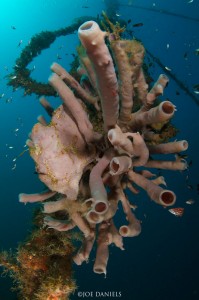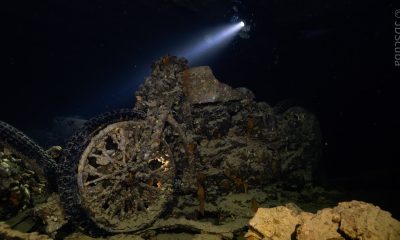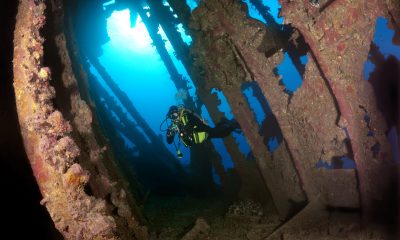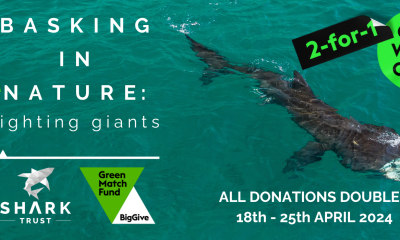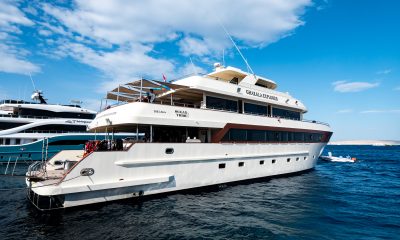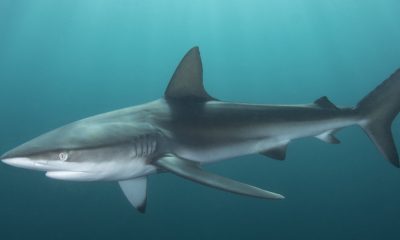Photo / Video News & Reviews
Close Focus Wide Angle Critters
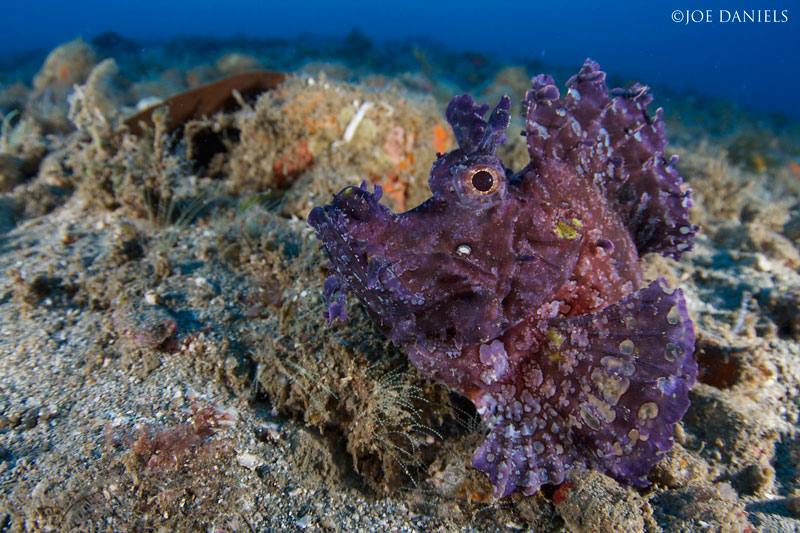
Don’t forget to pack your wide angle lens.
Last year I decided to make the the move from the pristine beaches of Mahe, in the Seychelles to the mucky slopes of Ambon, Indonesia. The Island of Mahe was surrounded by beautiful hard coral reefs, colorful fish, turtles and the occasional shark. The majority of my time in the Seychelles was spent shooting wide angle, and only occasionally did i get the chance to break out the macro lens. Now living in Ambon, it is a different story; with dive sites packed with weird and wonderful critters, the macro lens has certainly been getting a good work out. Having the luxury of spending time exploring the sites of Ambon and becoming familiar with the critters, I have noticed that there are many great opportunities to move away from the classic macro shot and to break out the fish eye lens – not only to capture some of the larger critters, but also to incorporate some of the strange and diverse habitats these critters call home.
When planning a macro trip, people often fall into the trap of thinking small. We pack our macro lenses, dioptors and tele convertors in order to capture classic shots such as the yawning Frogfish, Harlequin Shrimp on a blue Sea Star and Squat Lobster in a Crinoid. Not many people think about packing a wide angle lens for obvious reasons, but one thing Ambon has taught me is there is as much diversity available in photographic options as there are critters in Ambon Bay! There are opportunities to be had through a wider lens and the results can really set your images apart from the rest.
What is Close Focus Wide Angle?
Close focus wide angle is a technique that is typically practiced using a very wide lens. Fisheye lenses work best because of the extremely close focusing distance and the ability to focus on subjects just off of your dome port. This technique will make your subject appear larger and really pop from your background, especially
with the forced perspective this type of lens gives. Close focus wide angle is not normally associated with muck and critter diving due to the small size of the majority of subjects, but there are some species where Close Focus Wide Angle is a very effective technique.
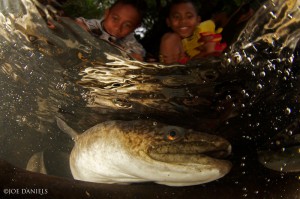
Fresh Water Eels of Larike Village, Ambon, Indonesia, Canon 7d, Tokina 10- 17mm, Nauticam Housing, Ikelite ds160-161 Strobes. f8, 1/200th, ISO 160
Choosing your subject
One of the most challenging aspects when shooting close focus wide angle is finding a prominent foreground subject and also a pleasing background. If you can find both of these you have the basic building blocks for a great image. Jetties are always a good place to start as they attract a large variety of life and provide great backgrounds and light. It is always worth planning your dives under a jetty in accordance with the sun’s height; knowing which way the jetty faces and timing your dive will ensure you make the most of the light. Close Focus Wide Angle is not a technique that you are going to be able to use on tiny critters such as a Skeleton Shrimp or Boxer Crabs. Instead concentrate on larger critters such as Giant Frogfish, Scorpion Fish, Rhinopias, Octopus, Anenomes and Ghost pipe fish which all provide great opportunities with the wider lens. What you are really looking for is a slow moving bottom dwelling creature that has a balance of colour and character. A lot of the time, especially on a critter diving trip, some of your subjects are bound to be on a rubble or sand slope with only limited visibility. To combat this you want to get as low and close as possible, minimizing the distance between you and your subject. This will give you more contrast and colour from your subject. This trick is not only specific to Close Focus Wide Angle, however; getting close and low in general is a great tip to remember when shooting underwater.
Your dive guide will play a big part in helping you choose the right subject – not only because they will know what critters are around, but they can also advise you on the type of substrate or background you will be dealing with. Often a good muck diving site will have a number of critters around, so it’s worth doing a macro dive on the site first to check it out, and if the conditions look good, return with your wide angle set up.
Lighting
In terms of lighting and exposure, you are going to want to light your subject with your strobes; you can then control the light in your background by using your shutter speed to get the water tone you are after. As for your subject, you can control the exposure by using your aperture and strobe power. Start of with an aperture of f8 (but you may need bump it down a few stops if you want more depth of field to maybe f14). For your strobes they will have to be tucked back away from the port (about level with the hot shoe connection) and angle them a little way out from the housing so you are utilizing the softer light on the edge of the strobe beam. Your strobes will also have to be nice and close to your housing in order to illuminate the whole subject and not create large shadows.
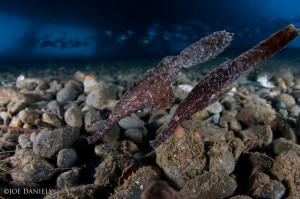
Robust Ghost Pipefish, Ambon, Indonesia, Canon 7d, Tokina 10-17mm, Nauticam Housing, Ikelite ds160-161, f9, 1/125, ISO 200.
Equipment
Fish eye lenses are the order of the day with this technique (Nikon 10.5, Canon 15mm and the Tokina 10-17mm). Tele convertors are also great addition as they reduce the coverage of the lens and add depth of field to your shot. As for the dome, a small dome is essential – no bigger than 6 inches in order to get as low and close to your subject as possible.
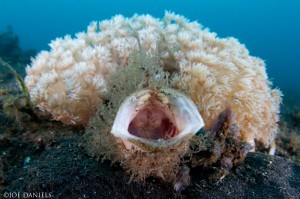
Hairy Frogfish, Lembeh, Indonesia, Canon 7d, Tokina 10-17mm, Nauticam Housing, Ikelite ds160-161, f9, 1/125th, ISO 200.
Tips
- – Plan your dives and speak to your dive guides. Ask them what is around and also where it is. Only use the wide angle set up if you know there may be a critter you can use this technique on. Don’t strap on the fisheye for every muck dive.
- – Get low and get close – this technique is all about getting as close as you can without disturbing the critter.
- – Have your strobes close to your housing.
So when planning your next muck diving trip, consider a wide angle set up for some of your dives. Take the time to look at some of the critters with a wider perspective to add a bit off diversity to your critter portfolio.
http://www.flickr.com/photos/joedaniels/ or
www.jldaniels.co.uk
Blogs
Diver Discovering Whale Skeletons Beneath Ice Judged World’s Best Underwater Photograph
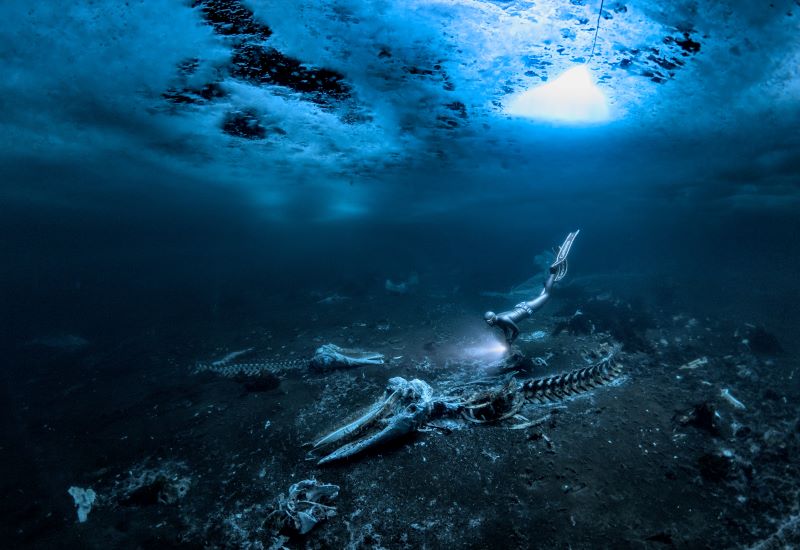
An emotive photograph showing a freediver examining the aftermath of whaling sees
Alex Dawson from Sweden named Underwater Photographer of the Year 2024. Dawson’s
photograph ‘Whale Bones’ triumphed over 6500 underwater pictures entered by underwater
photographers from around the world.
“Whale Bones was photographed in the toughest conditions,” explains chair of judging
panel Alex Mustard, “as a breath-hold diver descends below the Greenland ice sheet to bear
witness to the carcasses. The composition invites us to consider our impact on the great
creatures of this planet. Since the rise of humans, wild animals have declined by 85%. Today,
just 4% of mammals are wildlife, the remaining 96% are humans and our livestock. Our way
needs to change to find a balance with nature.”
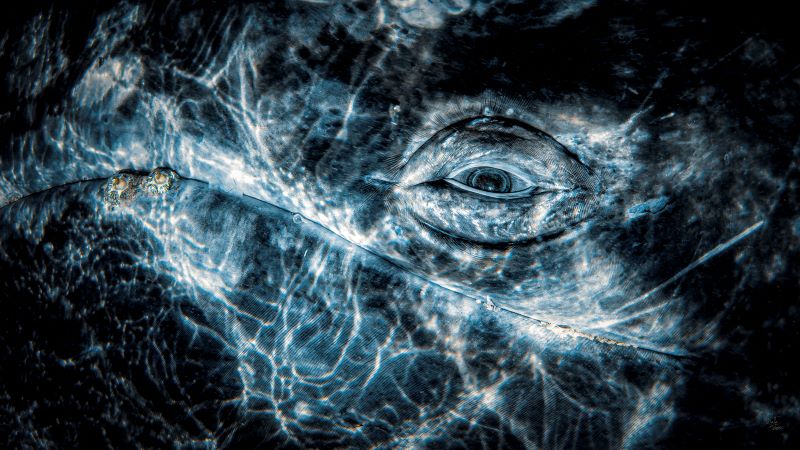
Photo: Rafael
Fernandez Caballero
Whales dominated the winning pictures this year with Spanish photographer Rafael
Fernandez Caballero winning two categories with his revealing photos of these ocean giants:
a close up of a grey whale’s eye and an action shot of a Bryde’s whale engulfing an entire bait
ball, both taken in Magdalena Bay, Baja California, Mexico. Fernandez Caballero took ‘Grey
Whale Connection’ while drifting in a small boat, holding his camera over the side in the water
to photograph the curious whale. ‘The End Of A Baitball’ required Fernandez Caballero to dive
down and be in exactly the right place at the moment the whale lunged. “The photo shows
the high speed attack,” he said, “with the whale engulfing hundreds of kilograms of sardines
in one bite — simply unforgettable to see predation on such a scale.”
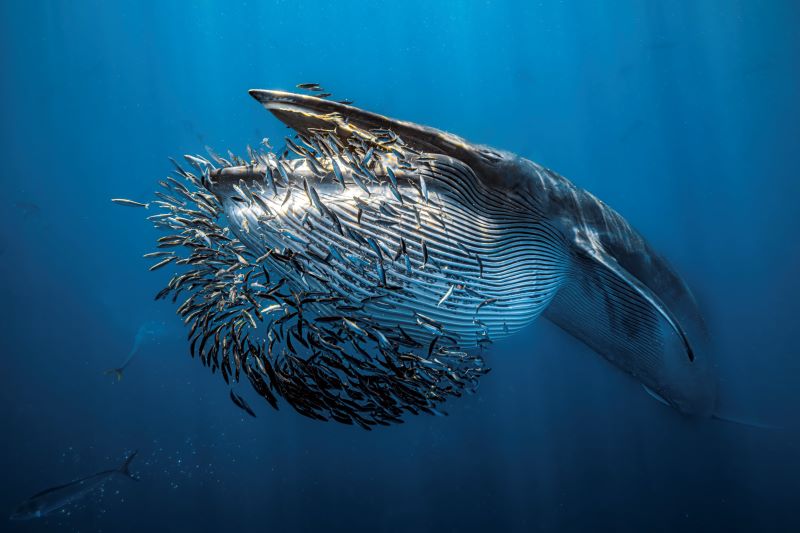
Photo: Rafael
Fernandez Caballero
Lisa Stengel from the United States was named Up & Coming Underwater Photographer of the Year 2024 for her image of a mahi-mahi catching a sardine, in Mexico. Stengel used both a very fast shutter speed and her hearing to catch the moment. “If you listen there’s an enormous amount of sound in the ocean,” she explained. “The action was too fast to see, so I honed in on the sound of the attacks with my camera to capture this special moment.”
“It is such an exciting time in underwater photography because photographers are capturing such amazing new images, by visiting new locations and using the latest cameras,”
commented judge Alex Mustard. “Until this year I’d hardly ever see a photo of a mahi mahi,
now Lisa has photographed one hunting, action that plays out in the blink of an eye.”
The Underwater Photographer of the Year contest is based in the UK, and Jenny Stock,
was named as British Underwater Photographer of the Year 2024 for her image “Star
Attraction”, which finds beauty in species of British wildlife that are often overlooked.
Exploring the west coast of Scotland, Stock explained “in the dark green depths my torch
picked out the vivid colours of a living carpet of thousands of brittle stars, each with a
different pattern. I was happily snapping away, when I spotted this purple sea urchin and I
got really excited.”
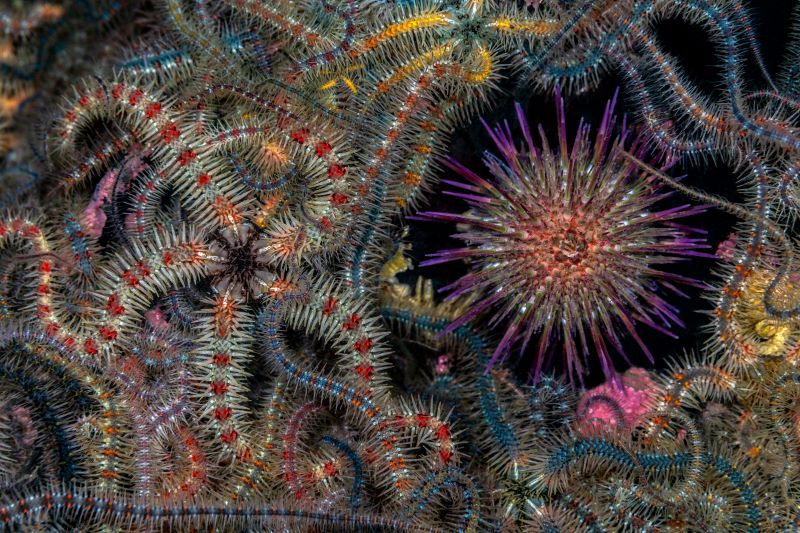
Photo: Jenny Stock
In the same contest, Portuguese photographer, Nuno Sá, was named ‘Save Our Seas
Foundation’ Marine Conservation Photographer of the Year 2024, with his photo ‘Saving
Goliath’, taken in Portugal. Sá’s photo shows beachgoers trying to save a stranded sperm
whale. The picture gives us hope that people do care and want to help the oceans, but also
warns us that bigger changes are needed. “The whale had been struck by a ship and its fate
was sealed,” explains Sá. “An estimated 20,000 whales are killed every year, and many more
injured, after being struck by ships-and few people even realise that it happens.”
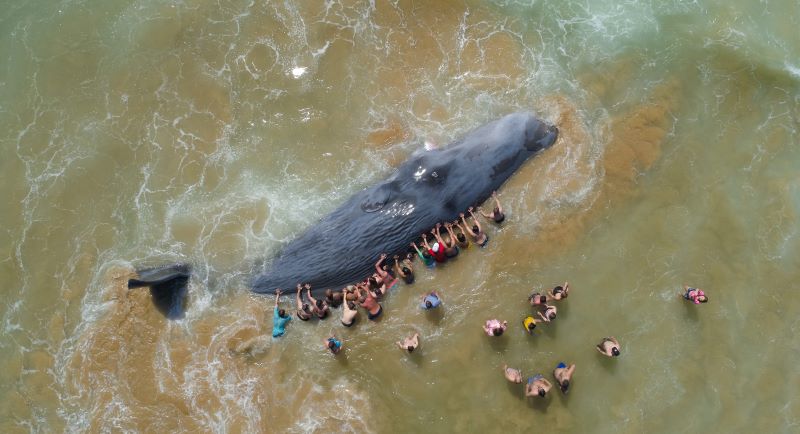
Photo: Nuno Sá
More winning images can be found at www.underwaterphotographeroftheyear.com.
About Underwater Photographer of the Year
Underwater Photographer of the Year is an annual competition, based in the UK, that celebrates photography beneath the surface of the ocean, lakes, rivers and even swimming pools, and attracts entries from all around the world. The contest has 13 categories, testing photographers with themes such as Macro, Wide Angle, Behaviour and Wreck photography, as well as four categories for photos taken specifically in British waters. The winners were announced in an award ceremony in Mayfair, London, hosted by The Crown Estate. This year’s UPY judges were experienced underwater photographers Peter Rowlands, Tobias Friedrich and Dr Alexander Mustard MBE.
Header image: Underwater Photographer of the Year 2024 winner Alex Dawson
News
World’s Best Underwater Photographers Unveil Breathtaking Images at World Shootout 2023
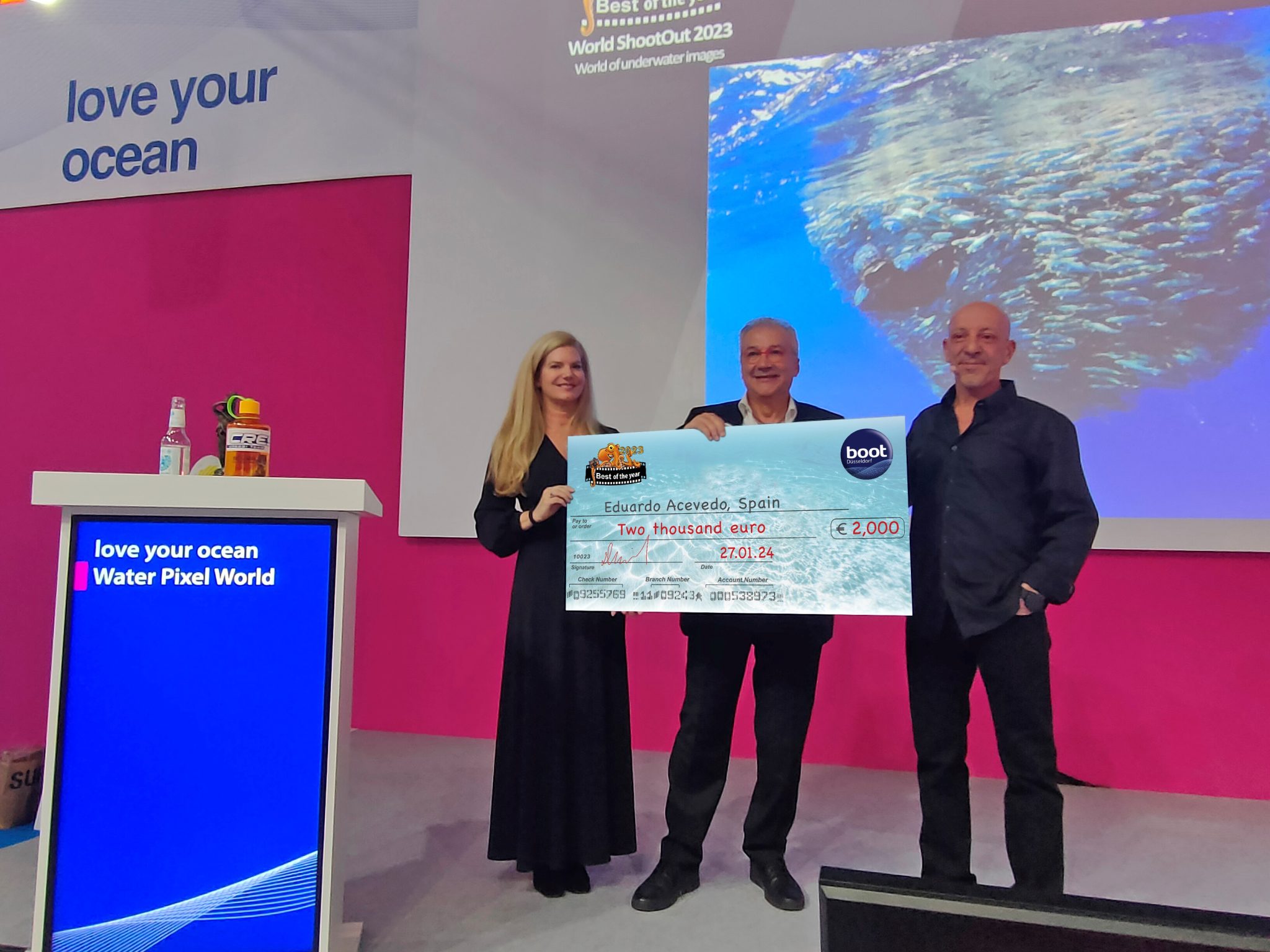
The winners of the prestigious World Shootout 2023 underwater photography competition were announced at this year’s BOOT Show, captivating audiences at the world’s largest diving and water sports exhibition in Dusseldorf, Germany. Hundreds of photographers from 54 countries competed across nine categories, pushing the boundaries of creativity and technical skill.
Grand Prize Winners
- Picture of the Year: Spanish photographer Eduardo Acevedo “secured” the top Honor with the prestigious prize the “boot Dusseldorf Director’s Prize, earning an Andromeda statuette and a €2,000 cash prize.
- Best 5 Images Portfolio: Luc Rooman from Belgium triumphed in this category, winning a dream 4-week diving trip for two to Papua New Guinea, valued at $18,900.
- Amateur Photographer: Alexandra Ceurvorst from the USA impressed the judges with her talent, taking home the 1,000 € cash prize award.
Celebrating Diversity and Innovation
This year’s competition saw 11,680 entries from 964 photographers, showcasing a remarkable spectrum of skills and perspectives. From the intricate wonders of Macro photography to the beauty of “Black Water”, the “Underwater Fashion” category added a touch of artistry and innovation, while the ever-important ” Environmental & Conservation” category served as a powerful reminder of the need to protect these fragile ecosystems.
Looking Ahead: AI and Ocean Conservation
World Shootout founder and producer David Pilosof unveiled an exciting addition for the 2024 competition: this year the Environmental category will be focusing on the impact of plastic on our oceans and future.
This category will embrace the potential of AI or other editing software as a tool to amplify the conservation message.
Entrants will submit campaigns of three original underwater photographs dealing with plastic pollution, along with their final AI assistance processing. This innovative approach encourages artistic expression while raising awareness about a critical environmental issue.
Explore the Stunning Collection
Discover the complete album of competition entries by clicking here.
For Low-resolution photos of finalist entries in eight categories, click here.
-
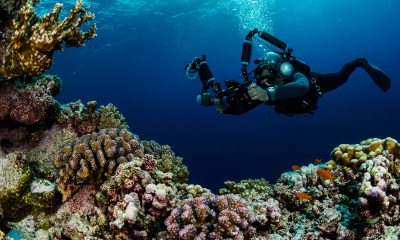
 News3 months ago
News3 months agoHone your underwater photography skills with Alphamarine Photography at Red Sea Diving Safari in March
-
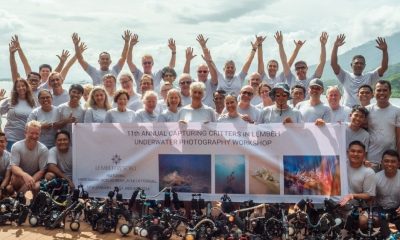
 News3 months ago
News3 months agoCapturing Critters in Lembeh Underwater Photography Workshop 2024: Event Roundup
-
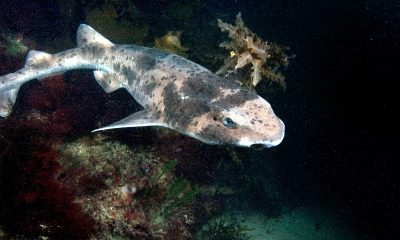
 Marine Life & Conservation Blogs2 months ago
Marine Life & Conservation Blogs2 months agoCreature Feature: Swell Sharks
-

 Blogs2 months ago
Blogs2 months agoMurex Resorts: Passport to Paradise!
-
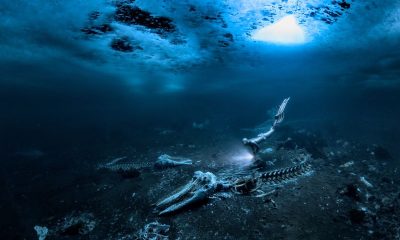
 Blogs2 months ago
Blogs2 months agoDiver Discovering Whale Skeletons Beneath Ice Judged World’s Best Underwater Photograph
-
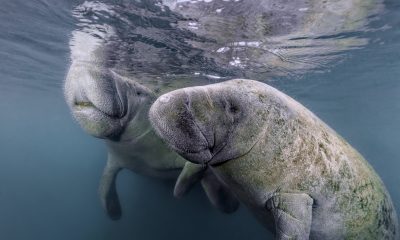
 Marine Life & Conservation2 months ago
Marine Life & Conservation2 months agoSave the Manatee Club launches brand new webcams at Silver Springs State Park, Florida
-

 Gear Reviews3 months ago
Gear Reviews3 months agoGear Review: Oceanic+ Dive Housing for iPhone
-
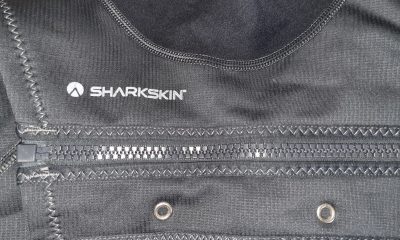
 Gear Reviews2 weeks ago
Gear Reviews2 weeks agoGEAR REVIEW – Revolutionising Diving Comfort: The Sharkskin T2 Chillproof Suit


